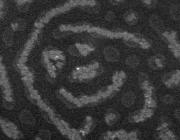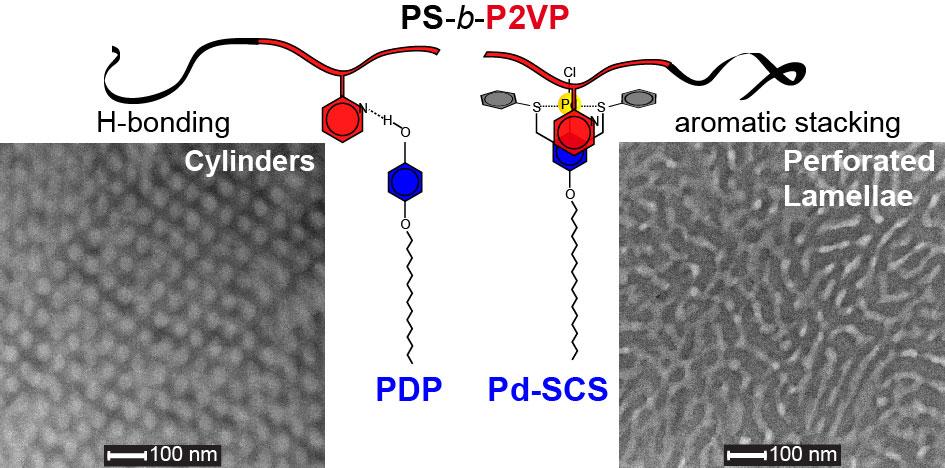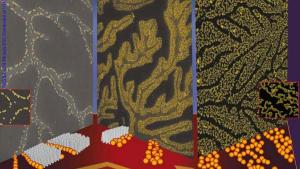Citation:
Date Published:
AUG 26Abstract:
Selective segregation of surfactant molecules to one domain type of block copolymers in the melt leads to the formation of hierarchical structures. Here we show that combining an organometallic, Pd-pincer-based surfactant (Pd-SCS) with a polystyrene-block-poly(2-vinylpyridine) (PS-b-P2VP) diblock copolymer leads to hierarchical structures due to weak stacking interactions between the Pd-pincer complex and the pyridine units. These structures feature a different morphological behavior than analogous systems, including the formation of perforated lamellae (PL) over a wide range of surfactant filling fractions and a distinct swelling anisotropy behavior of the copolymer chains by the added surfactant molecules. The results suggest that the strength of interaction between the surfactant and the compatible block influences the degree of segregation between the blocks. This study lays the foundations for the creation of organized, hierarchical arrays of inorganic nanoclusters that are periodic on two different length scales.





